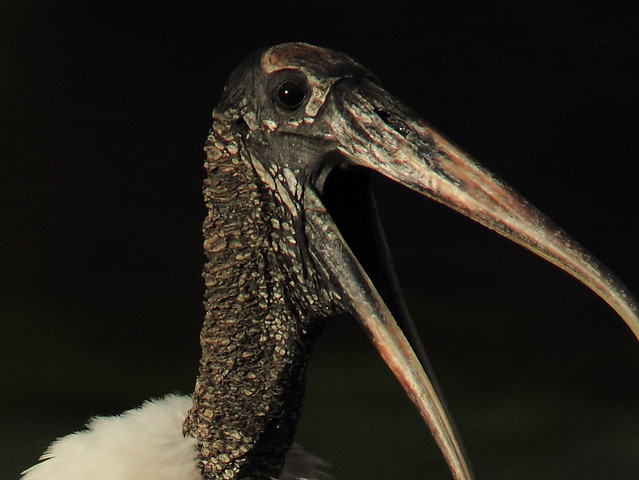
This year there have been very few Wood Storks on our lake or the surrounding wetlands. After a banner nesting season in 2009, when dozens of immature storks visited us, we have seen only adults, and fewer each year. See my updated blog "Struggling Storks."
It is interesting to see how the stork rests one leg by grasping the other by its "knee."
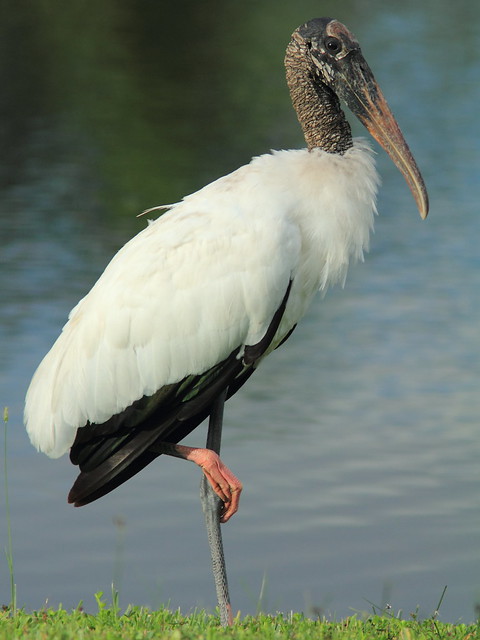
Our local birding patch cannot really be called a "hotspot," or a place to find a rarity, and it does not have unusually large concentrations of resident and migratory birds. Because we visit it frequently, nearly every morning, we have sighted a total of 109 species, 18 of them warblers. In truth, at the peak of migration the greatest number of warbler species tallied at one time has been 7 or 8, and there are have been many mornings when we failed to see a single one.
Warblers are much more abundant at several locations that are fairly nearby, but we are "homebodies" who prefer to get in our exercise and also fit an hour or so of birding into our morning schedule. An advantage we enjoy is that there are few tall trees in our wetland, which is officially called the West Broward Water Conservation Area. While this limits the habitat suitable for warblers and other migrant and resident birds, it does bring them down to eye level. Birders who visit prime warbler sighting areas and spend hours looking up into the tops of tall trees often are afflicted with "warbler neck."
This past week, after the great day we described in the previous post we set out with high expectation and were not disappointed.
Common Yellowthroats breed locally, but their numbers are expanded by migrants passing through. This is an adult male.

This immature male still has not developed a full mask.

The demure female yellowthroat is no less beautiful.
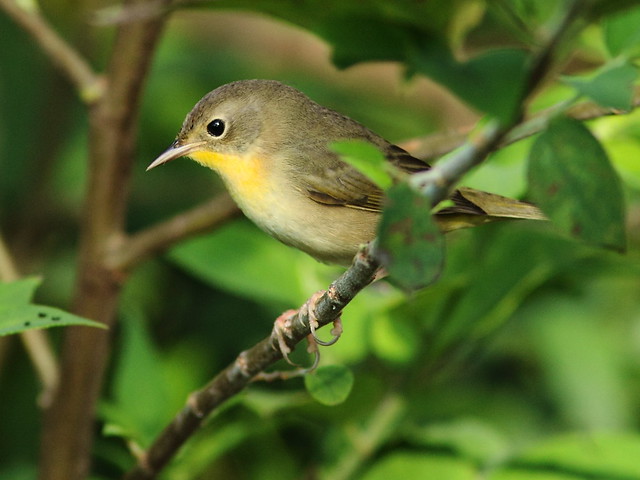
Prairie Warblers also nest locally.

Several Ovenbirds appeared.
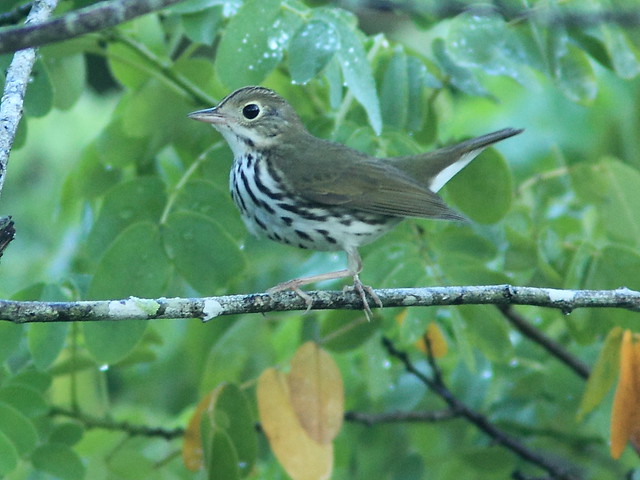
Ovenbirds commonly forage on the ground.
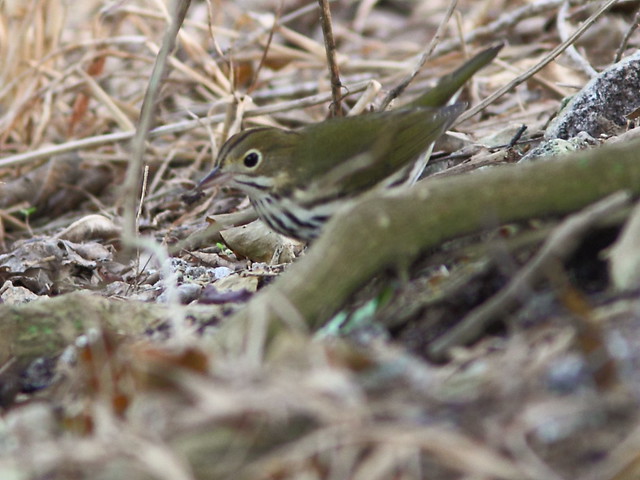
Although we have been birding this area since 2004, this was our first local sighting of a Worm-eating Warbler, and my first-ever photograph of one.
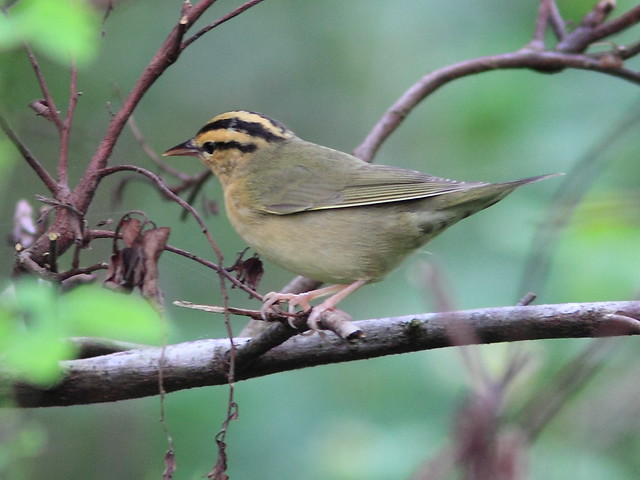
As the skies were overcast these photos did not turn out very well, but it was a thrill to capture its image. Without flash and at ISO 800 with the aperture locked at f/5.6, the 1/100 second exposures were blurred by the bird's movement. There is a rule that wildlife exposure speed should at least be the inverse of the focal length of my 420mm system, or 1/420 second.
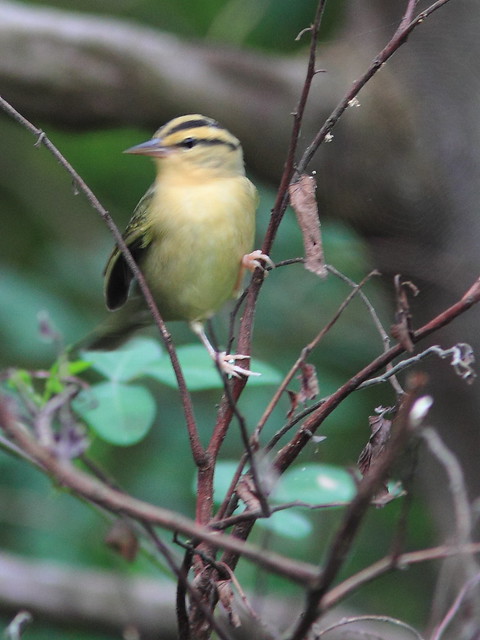
The skies cleared and a few Black-and-white Warblers appeared. They are very active as they climb along the larger branches in search of insects hidden in the bark.

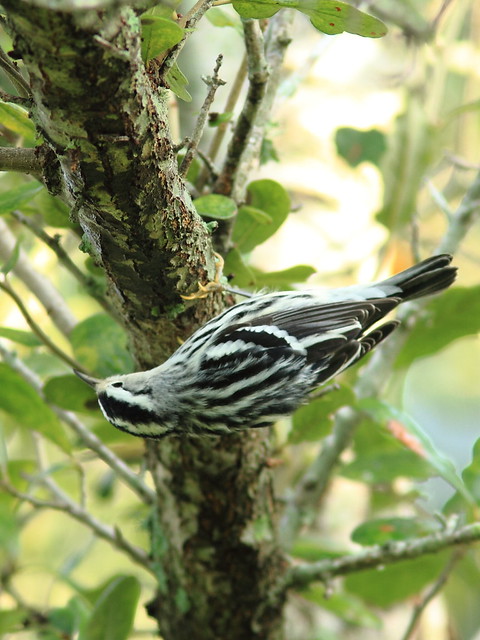
There followed one of my most enjoyable few minutes since taking up bird photography. A group of 4 -6 Yellow-throated Warblers suddenly flew in. One was so tame that I had to switch my lens to a macro setting because the bird approached nearer than 3 meters.

While I have photographed this species previously, it was the first time I had ever seen them in our local patch.

I won't bore you with any more, but suffice it to say that I took over 50 photos of them, many up close and personal.

Other birds of note included this Red-eyed Vireo.
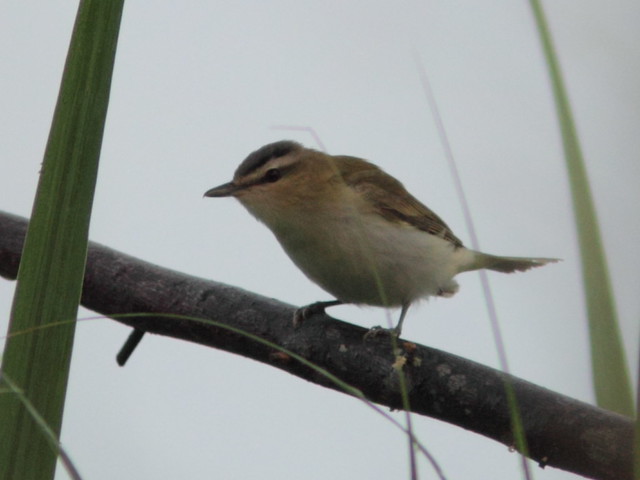
The Northern Cardinals have just about finished their post-breeding molt into fresh plumage. Note the new tail feathers growing in.

A Great Crested Flycatcher peered out through the branches.
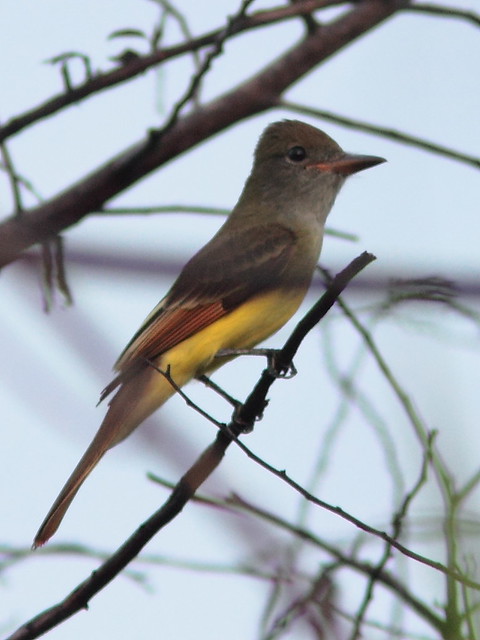
Two pairs of Common Ground-Doves feasted on the fruit of a nearby Florida Trema.
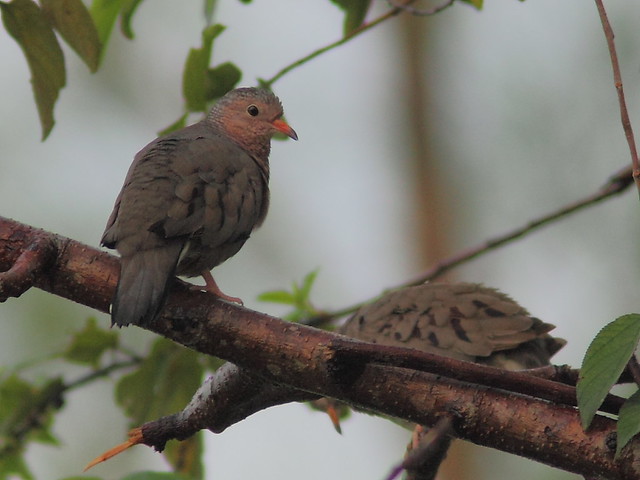
A Loggerhead Shrike perched atop a shrub.
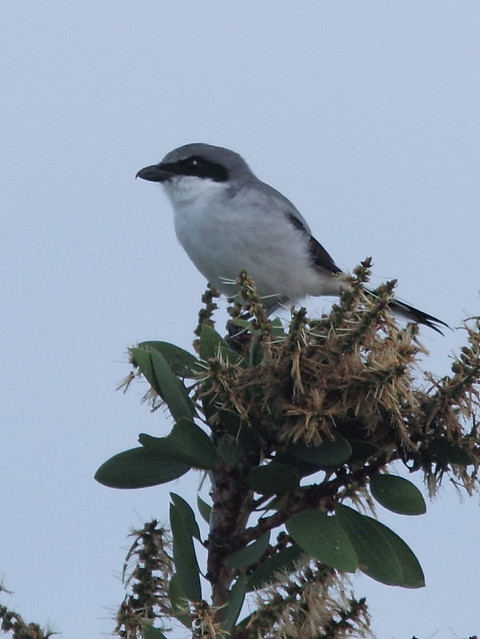
A Green Heron eyed me from its vantage point along the canal.

A migrating Brown Thrasher scolded me with a loud "chack!"

The next morning brought in Palm Warblers, which will stay here for the winter, becoming so common that locals call them "Florida Sparrows."
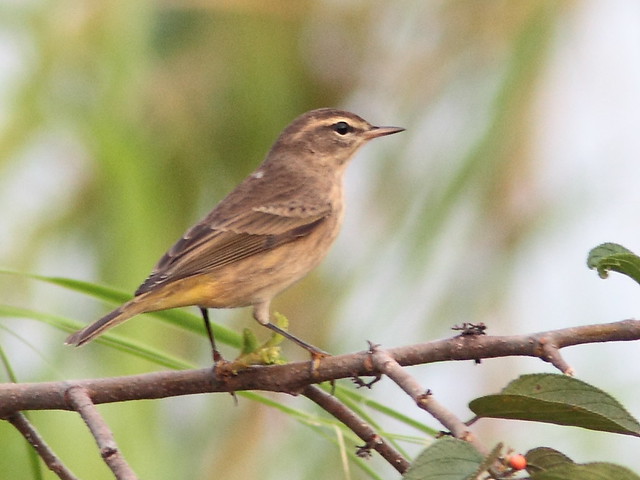
A Great Egret cast a nice reflection.

Lantana blossomed...

...and flowers of the Arrowhead thrust up in a swampy area.
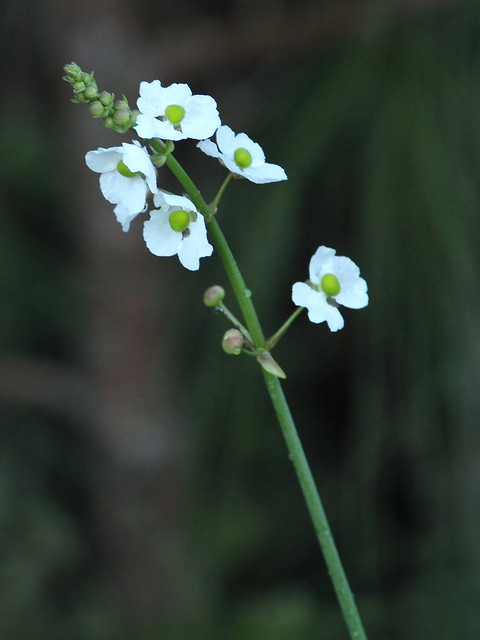
Several small butterflies were active, including this Monk Skipper, native to Cuba, sipping nectar from a Ligustrum.

Another nondescript skipper is Horace's Duskywing.

The Fiery Skipper is more distinctively marked.
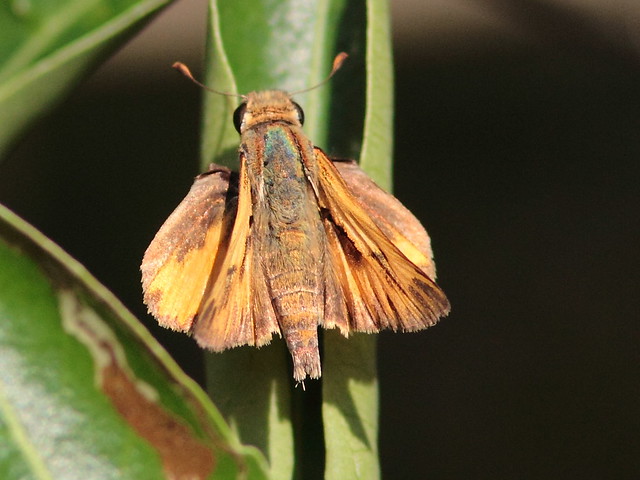
By mid-morning I had to keep a close eye on the weather and confined my wandering to an area only a quarter of a mile from home. Storm clouds built up over the 196th Avenue canal that borders our subdivision. Looking south, our birding patch extends to the north and south along the right (west) side of the canal

This was the view heading home along the unfinished extension of Miramar Parkway as it curves to the east.
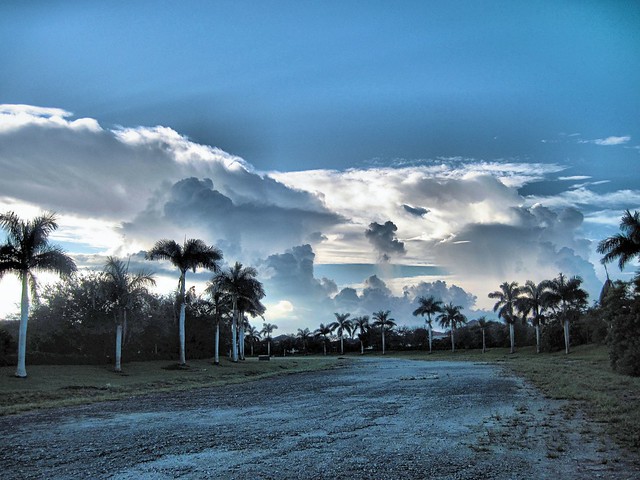


Woah ho! Very nice Ken; you've got some super stellar Warbler photos. The local patched don't always have the highest concentrations of local birds, but they do pull them in at one time or another, you just gotta be there often. And as you say, the great advantage is that you know the area and it's more at eye level. I love my local patched most of all too.
ReplyDeleteamazing series and very nice post Ken!
ReplyDeleteWhat a marvelous area to view a wide variety of birds! I'm in awe of your Common Yellowthroat and Yellow-throated Warbler images. All are fabulous, though! Breathtaking landscape/storm capture, too. Terrific post!
ReplyDeleteWow, those land/cloudscapes are surreal...did you have a filter on?
ReplyDeleteIncredible shots of the Yellow-throated Warblers.
Hey,
ReplyDeleteWhat a great and lovely shots of all these different birds.
Wonderful!! It's real enjoyment to see.
Many greetings,
Marco
A surfeit of fantastic images, Ken. I don't know where to begin. The stork looks like it belongs into an earlier age. The warblers are my favorites, esp. the yellow-throated one! The flowers, the moths and the Florida landscapes are gorgeous. You are truly living in paradise!
ReplyDeleteTerrific post and images!
ReplyDelete@Seagull Steve-- I used only a UV filter, but enhanced the cloud effects by layering four different brightness levels along with the original, and processed it as an HDR photo set.
ReplyDeleteThanks, all for your gracious comments!